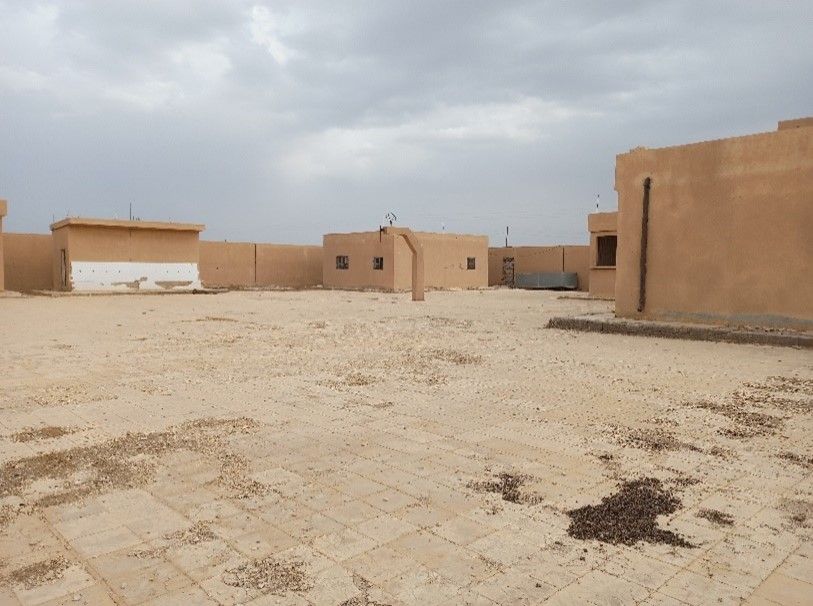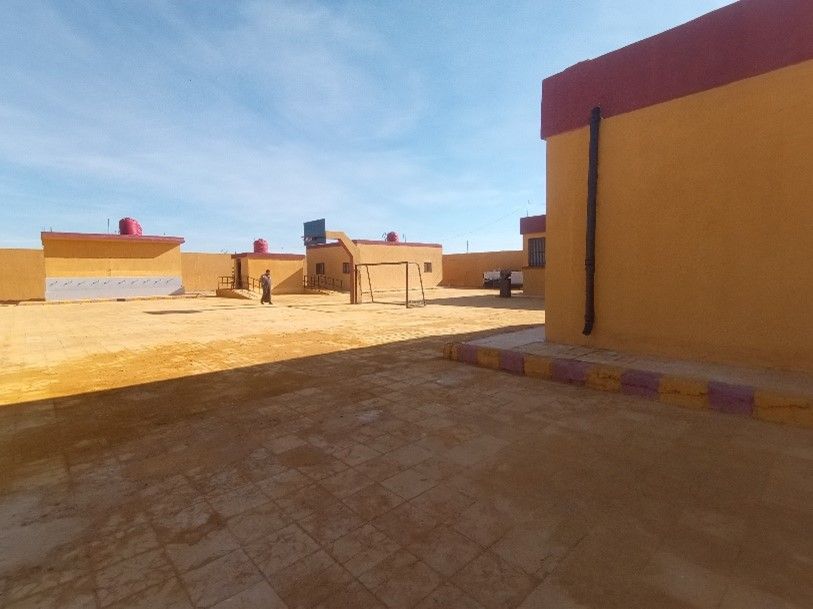The Issue
In 2023, Syria continues to be one of the most complex crises in the world, with an estimated 13.4 million people in need of humanitarian assistance. An estimated 6.9 million people in Syria (97% of which are children) need education, with 94% of school-aged children across Syria living in areas with severe, extreme, or catastrophic education conditions.
Schools have been further impacted by COVID-19 resulting in their closure for much of 2020 and some of 2021. Furthermore, explosive ordnance contamination is estimated to affect one third of populated communities within those areas which have experienced intense hostilities.

The Project
The project aimed to rehabilitate two damaged schools in the Northern part of Deir Ez Zohr Governorate, while also empowering people in the neighbouring villages through risk education to mitigate the risk of physical injury from explosive hazards.
Prior to the implementation of this project, the two schools targeted for rehabilitation have been cleared from Explosive Remnants of War (ERW) and Improvised Explosive Devices (IED) by DCA’s Humanitarian Mine Action team, rendering them safe for rehabilitation and other activities.
The Change
The project aimed to enable children in Northern Deir Ez Zohr to (re)access education. To achieve this, DCA engaged in school rehabilitation activities to ensure that the learning environment in supported schools was safe, inclusive, conducive to learning, and supported the well-being of students and teachers.
The school rehabilitation by contractor directly involving community members from the local communities served to increase community ownership of project activities and helped to create a positive relationship with schools, education authorities and communities more widely.
By providing risk education to children and teachers, the project did not only contribute to saving lives, but also improved vulnerable communities’ abilities to cope with the effects of protracted conflict by enabling them to better protect themselves, their families, friends, and future generations of students through increased awareness of the risks of explosive hazards and safe behaviours to adopt.

The Results
Case Story: Abu Janadel
Abu Janadel is one amongst many schools in Deir ez Zor that was left behind contaminated. While some have been cleared and rendered safe for use, others were unsuccessfully cleared thus (causing casualties) – discouraging local authorities and humanitarian actors from making new attempts. Following a technical survey of Abu Janadel school compound, DCAs Clearance teams discovered a large complex of improvised explosives devices, with some 32 main charges all interlinked, located underneath the floor tiles inside the main school building. DCA successfully cleared the school of all explosives and rehabilitated the school infrastructure by 2022 – providing both renewed recreational and Water, Sanitation and Hygiene (WASH) facilities.
Our Work
DCA has been operating in Northeast Syria (NES) since 2015, supporting vulnerable communities through a combination of emergency response and humanitarian mine action activities, including Explosive Hazard (EH) risk education, survey, and clearance. DCA Syria works to clear explosive hazards, paving the way for rehabilitation and other humanitarian interventions, while educating communities on how to mitigate the risk of living in contaminated areas.
About the project
Project title: A Place to Learn: School Rehabilitation in Ar-Raqqa
Funding: DKK 2,000,000
Donor: Novo Nordisk Fonden
People reached: 625


